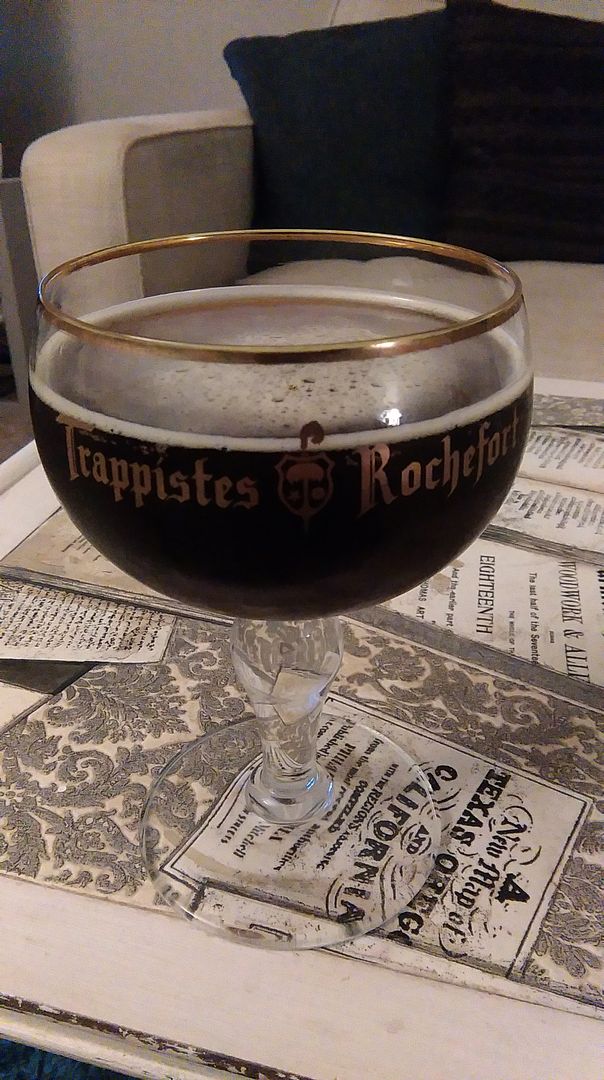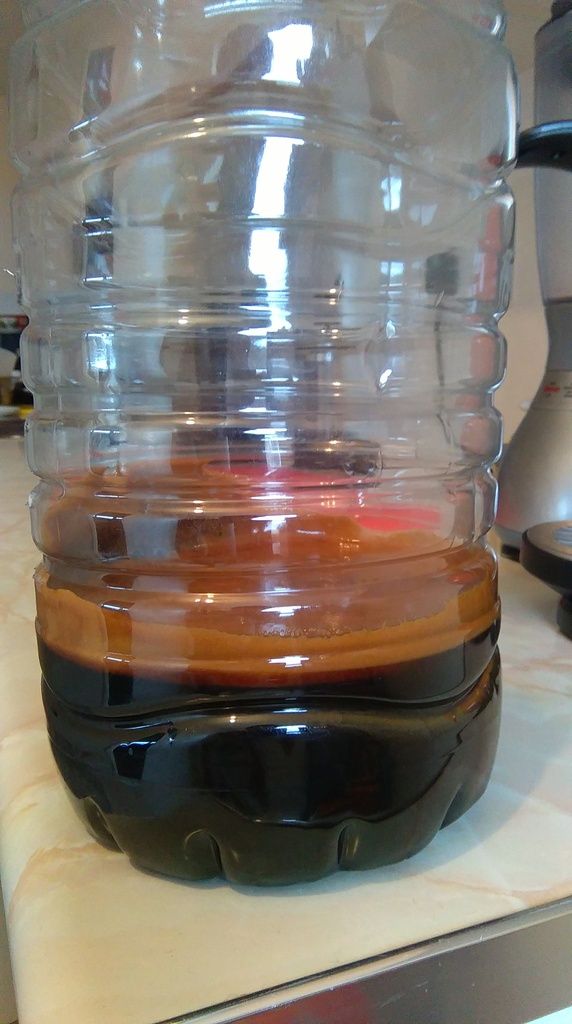strange-steve
Quantum Brewer
- Joined
- Apr 8, 2014
- Messages
- 6,027
- Reaction score
- 5,804
This is one of my favourite beers that I've brewed, not necessarily because it's the best, but I love the depth of flavour despite only having base malt and sugar. It was an attempt to replicate Westvleteren XII, using the same "keep it simple" approach they use. Is it as good as the real thing? Not even close, but I'm still happy with how it turned out 
I entered it in this year's Irish national competition and got a silver medal in the trappist ale category. Judges comments were that it had a too strong alcohol flavour which I put down to a lack of aging. Another few months would probably have smoothed it out.
Westvleteren XII Clone
Belgian Dark Strong Ale
Recipe Specs
----------------
Batch Size (L): 18
Total Grain (kg): 7.45
Total Hops (g): 85
Original Gravity (OG): 1.090
Final Gravity (FG): 1.012
Alcohol by Volume (ABV): 10.2 %
Colour (SRM): 36 (EBC): 72
Bitterness (IBU): 35 (Tinseth)
Brewhouse Efficiency (%): 65
Boil Time (Minutes): 120
Grain Bill
----------------
4.000 kg Pilsner (54%)
2.250 kg Pale Malt (30%)
1.200 kg Dark Candi Syrup (16%)
Hop Bill
----------------
20 g Northern Brewer Pellet (9.8% Alpha) @ 60 Minutes (Boil)
35 g Hallertau Mittlefrueh Pellet (3% Alpha) @ 30 Minutes (Boil)
30 g Styrian Golding Pellet (6.2% Alpha) @ 15 Minutes (Boil)
Water Profile
----------------
Calcium - 107 ppm
Magnesium - 7 ppm
Sodium - 18 ppm
Sulphate - 71 ppm
Chloride - 148 ppm
Bicarb - 25 ppm
Notes
----------------
The candi syrup is home-made by boiling muscovado sugar for 3 hours.
Single step Infusion at 64ðC for 90 Minutes.
Boil down 3L of first runnings to a thick dark brown syrup and add to boil.
Fermented with Wyeast 3787 - Trappist High Gravity with a 2L starter (underpitched a tad to increase esters).
Pitch at 17ðC and ramp by 1.5ðC per day up to 27ðC.
At around 1.015 rack to secondary and ramp down to 20ð over 4 days.
At FG of 1.012 crash to 10ðC and hold for 8 weeks.
Bottle at around 2.5 vol/CO2 with a pack of US-05.
Brewed 01/06/16
Bottled 10/08/16

I entered it in this year's Irish national competition and got a silver medal in the trappist ale category. Judges comments were that it had a too strong alcohol flavour which I put down to a lack of aging. Another few months would probably have smoothed it out.
Westvleteren XII Clone
Belgian Dark Strong Ale
Recipe Specs
----------------
Batch Size (L): 18
Total Grain (kg): 7.45
Total Hops (g): 85
Original Gravity (OG): 1.090
Final Gravity (FG): 1.012
Alcohol by Volume (ABV): 10.2 %
Colour (SRM): 36 (EBC): 72
Bitterness (IBU): 35 (Tinseth)
Brewhouse Efficiency (%): 65
Boil Time (Minutes): 120
Grain Bill
----------------
4.000 kg Pilsner (54%)
2.250 kg Pale Malt (30%)
1.200 kg Dark Candi Syrup (16%)
Hop Bill
----------------
20 g Northern Brewer Pellet (9.8% Alpha) @ 60 Minutes (Boil)
35 g Hallertau Mittlefrueh Pellet (3% Alpha) @ 30 Minutes (Boil)
30 g Styrian Golding Pellet (6.2% Alpha) @ 15 Minutes (Boil)
Water Profile
----------------
Calcium - 107 ppm
Magnesium - 7 ppm
Sodium - 18 ppm
Sulphate - 71 ppm
Chloride - 148 ppm
Bicarb - 25 ppm
Notes
----------------
The candi syrup is home-made by boiling muscovado sugar for 3 hours.
Single step Infusion at 64ðC for 90 Minutes.
Boil down 3L of first runnings to a thick dark brown syrup and add to boil.
Fermented with Wyeast 3787 - Trappist High Gravity with a 2L starter (underpitched a tad to increase esters).
Pitch at 17ðC and ramp by 1.5ðC per day up to 27ðC.
At around 1.015 rack to secondary and ramp down to 20ð over 4 days.
At FG of 1.012 crash to 10ðC and hold for 8 weeks.
Bottle at around 2.5 vol/CO2 with a pack of US-05.
Brewed 01/06/16
Bottled 10/08/16















![BREWING THERMOMETER STICKERS ACCURATELY MONITOR FERMENTING BEER & WINE LIQUID TEMPERATURES 5PCS HOME BREW SPIRITS WINE LCD ADHESIVE [US]](https://m.media-amazon.com/images/I/311DDjo2X3L._SL500_.jpg)





























